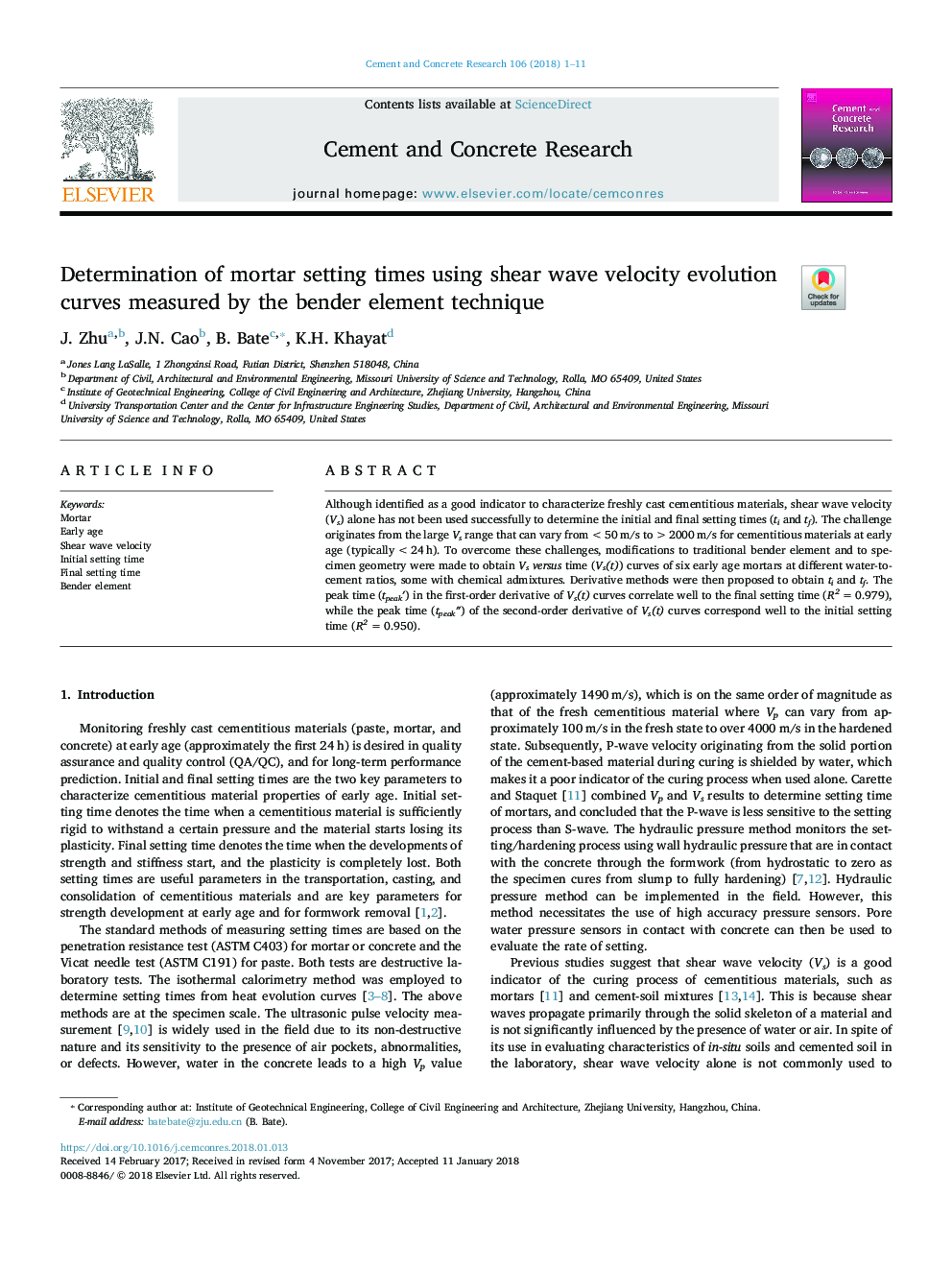| Article ID | Journal | Published Year | Pages | File Type |
|---|---|---|---|---|
| 7884733 | Cement and Concrete Research | 2018 | 11 Pages |
Abstract
Although identified as a good indicator to characterize freshly cast cementitious materials, shear wave velocity (Vs) alone has not been used successfully to determine the initial and final setting times (ti and tf). The challenge originates from the large Vs range that can vary from <50â¯m/s to >2000â¯m/s for cementitious materials at early age (typically <24â¯h). To overcome these challenges, modifications to traditional bender element and to specimen geometry were made to obtain Vsversus time (Vs(t)) curves of six early age mortars at different water-to-cement ratios, some with chemical admixtures. Derivative methods were then proposed to obtain ti and tf. The peak time (tpeakâ²) in the first-order derivative of Vs(t) curves correlate well to the final setting time (R2â¯=â¯0.979), while the peak time (tpeakâ³) of the second-order derivative of Vs(t) curves correspond well to the initial setting time (R2â¯=â¯0.950).
Related Topics
Physical Sciences and Engineering
Engineering
Industrial and Manufacturing Engineering
Authors
J. Zhu, J.N. Cao, B. Bate, K.H. Khayat,
